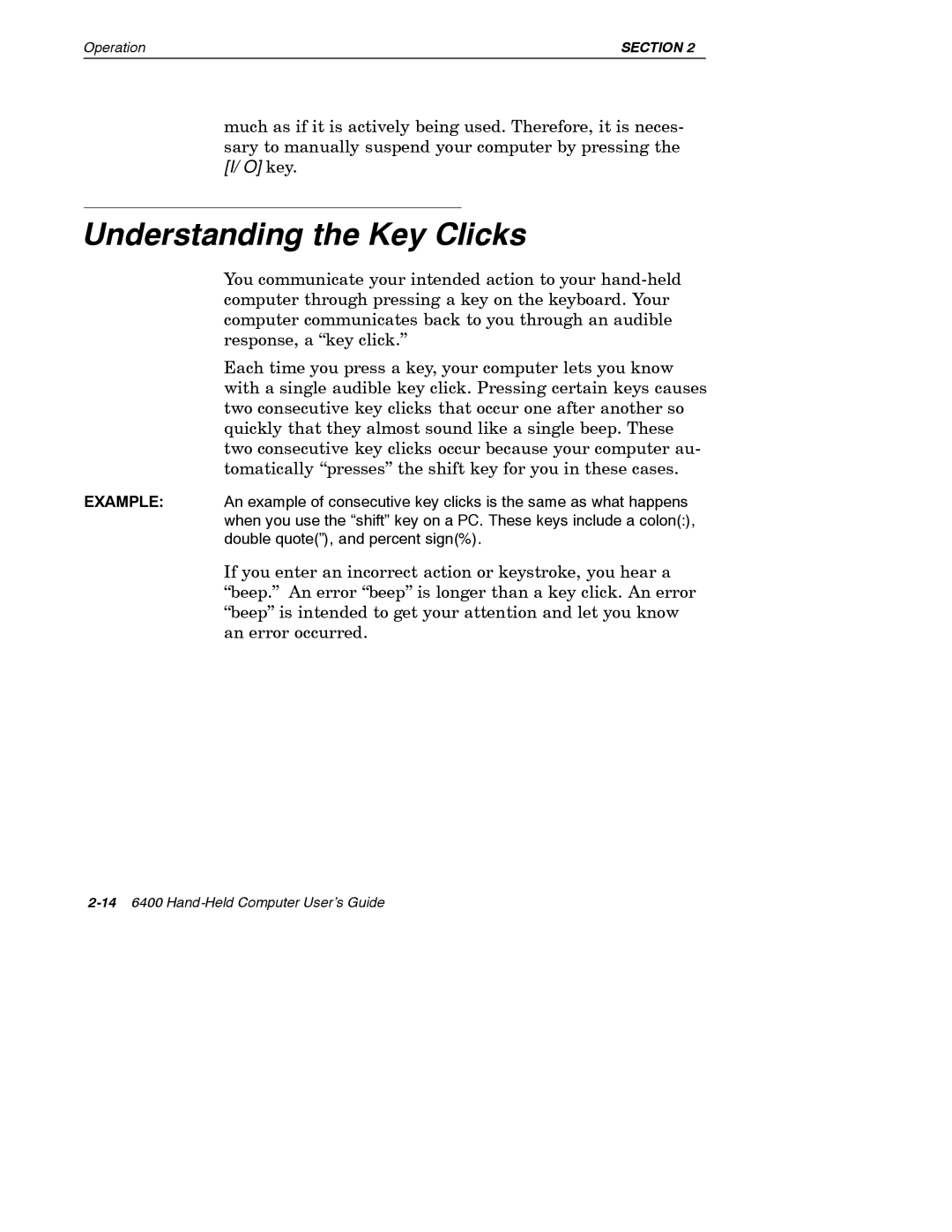Operation | SECTION 2 |
much as if it is actively being used. Therefore, it is neces- sary to manually suspend your computer by pressing the [I/O] key.
Understanding the Key Clicks
You communicate your intended action to your
Each time you press a key, your computer lets you know with a single audible key click. Pressing certain keys causes two consecutive key clicks that occur one after another so quickly that they almost sound like a single beep. These two consecutive key clicks occur because your computer au- tomatically “presses” the shift key for you in these cases.
EXAMPLE: An example of consecutive key clicks is the same as what happens when you use the “shift” key on a PC. These keys include a colon(:), double quote(”), and percent sign(%).
If you enter an incorrect action or keystroke, you hear a “beep.” An error “beep” is longer than a key click. An error “beep” is intended to get your attention and let you know an error occurred.
